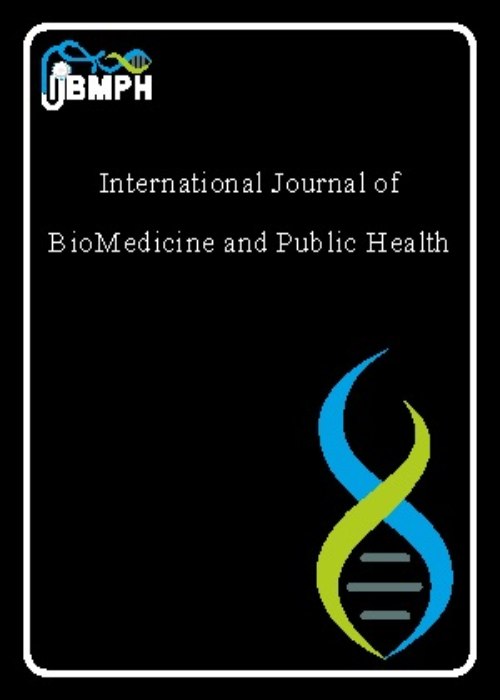فهرست مطالب
International Journal of Biomedicine and Public Health
Volume:2 Issue: 3, Summer 2019
- تاریخ انتشار: 1398/06/10
- تعداد عناوین: 2
-
Pages 46-50IntroductionFalling is one of the most important health issues among the elderly that can lead to irreparable injuries. Previous studies suggest that exaggerated hip muscle tightness is a common characteristic of the fallers. The present research aimed to analyze the effects of one stretching session on the falling risk of older adults.MethodsFifteen healthy elderly men voluntarily participated in this research. They randomly divided into two control and experimental group with equivalent physical characteristics (n=25 in each group). The participants were excluded if they had problems that may affect their walking ability. This study was quasi-experimental research. Kinematic gait analysis was executed by motion analysis system previous (PRE) and instantly following (POST) a set of characteristic static-stretching training for the hip flexor muscles on both limbs. Statistical analysis was performed using SPSS version 22.ResultsThe results of our study demonstrated a significant increase in walking speed and step length (P < 0.05) following one session of static-stretching training. Also, there was a significant decrease in double support time during the stance phase of walking (P < 0.05), proposing developed stability and mobility. The anterior-posterior pelvis tilt was also increased significantly in post-test in comparison with pre-test (P < 0.05). Some of the other gait parameters like toe clearance inhabited unchanged (P > 0.05) and the stable pattern of segmental angular velocities was suggested to analyze the stability of the unaltered gait parameters.ConclusionThe findings propose that stretching training, applied on a systematic basis (e.g. daily exercises), result in gait adaptations which can be considered as indicative of decreased the risk of fall.Keywords: Elderly, falling, Gait, Static-Stretching
-
Pages 51-56Introductiondrug dependence disrupts all the dimensions of individual, family and community life. The purpose of this study was to compare cognitive emotion regulation strategies in drug-dependent people and non-drug-dependent people in Ilam Province-Iran.MethodsThis case-control study was performed on two groups of 100 people (drug-dependent people and non-drug-dependent people) through convenience sampling. Data were collected by Garnefski Cognitive Emotion Regulation Questionnaire, and then analyzed by descriptive statistics and ANOVA, using SPSS.v22 software.ResultsAccording to the findings of the present study, the case group has a significant difference in the cognitive emotion regulation strategies with the control group (P = 0.003). The case group used more negative cognitive emotion regulation strategies (P = 0.021) and control group used more positive cognitive emotion regulation strategies (P = 0.019). The case group had lower cognitive emotion regulation than the control group (P = 0.003) and they use lower positive cognitive emotion regulation strategies (P = 0.019).ConclusionThe results showed that drug-dependent people used negative cognitive emotion regulation strategies rather than control group. The high use of negative cognitive emotion regulation strategies is one of the risk factors for drug abuse, which can be prevented of drug use, by appropriate preventive training.Keywords: Cognitive Emotional Regulation, Drug Dependence, Ilam


